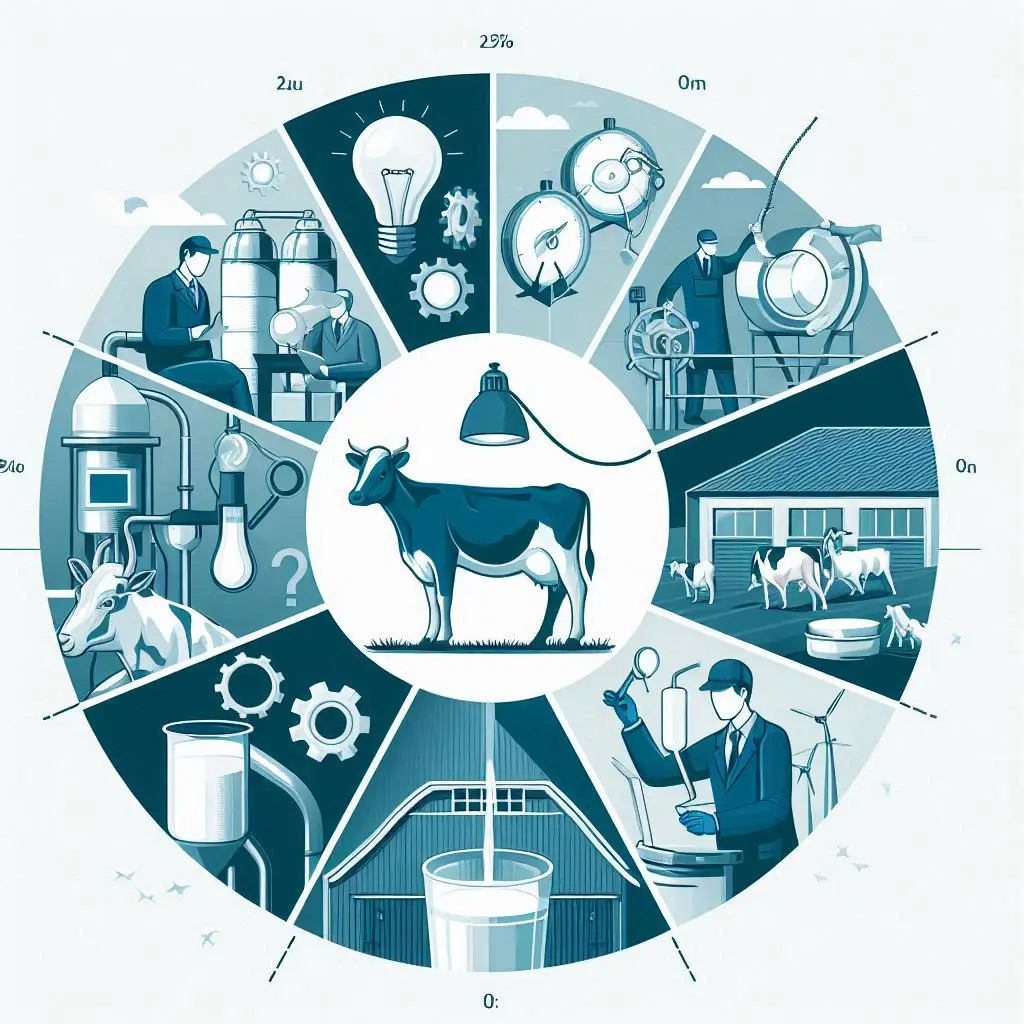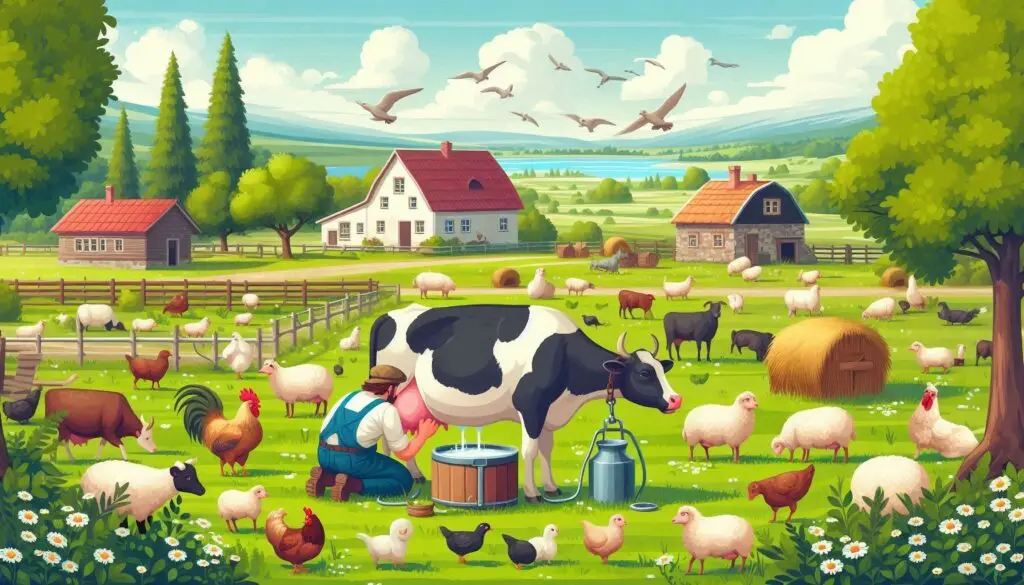Rashtriya Gokul Mission (RGM)

Introduction
India is home to a rich diversity of indigenous cattle breeds. However, over the years, these breeds have faced numerous challenges. The Rashtriya Gokul Mission (RGM) was launched to address these issues. This mission aims to conserve and promote indigenous cattle breeds, ensuring their survival and enhancing milk production.In this article, we will explore the objectives, initiatives, and impact of the Rashtriya Gokul Mission. We will also discuss how this initiative benefits farmers and contributes to the economy.
Background of the Rashtriya Gokul Mission
The Rashtriya Gokul Mission was launched in December 2014 by the Government of India. It aims to promote the development of indigenous bovine breeds. The mission recognizes the importance of these breeds in the dairy sector. They are not only vital for milk production but also play a critical role in the livelihood of millions of farmers.
Historical Context
Historically, India has been known for its diverse cattle breeds. Breeds like Gir, Sahiwal, and Red Sindhi are famous for their high milk yield and adaptability. However, with the rise of crossbreeding and commercial dairy farming, indigenous breeds faced neglect. The RGM was introduced to reverse this trend and revive the significance of these breeds.
Objectives of the Rashtriya Gokul Mission
The Rashtriya Gokul Mission has several key objectives. These objectives guide the mission’s initiatives and programs.
1. Breed Improvement
One of the primary goals of RGM is to improve the genetic quality of indigenous breeds. This involves selective breeding and the use of advanced reproductive technologies. The mission aims to enhance milk production and overall productivity.
2. Conservation of Indigenous Breeds
The RGM focuses on conserving indigenous cattle breeds. This conservation is essential for maintaining biodiversity. It also helps preserve the cultural heritage associated with these breeds.
3. Support for Farmers
The mission aims to provide support to farmers engaged in dairy farming. By promoting indigenous breeds, RGM helps farmers increase their income. This support is crucial for small and marginal farmers, who rely heavily on livestock.
4. Establishment of Gokul Grams
The mission also aims to establish Gokul Grams. These are integrated centers for the development of indigenous cattle. They serve as hubs for breeding, training, and education.
Key Initiatives Under the Rashtriya Gokul Mission
The Rashtriya Gokul Mission has several initiatives designed to achieve its objectives. These initiatives focus on various aspects of cattle development.
1. Gokul Grams
Gokul Grams are established as Integrated Indigenous Cattle Development Centers. They provide facilities for breeding, training, and research. These centers focus on improving the quality of indigenous breeds. They also serve as a platform for farmers to learn about best practices in dairy farming.
2. Incentives for Farmers
The RGM offers incentives to farmers who maintain elite animals of indigenous breeds. This encourages farmers to invest in quality livestock. The incentives help improve the overall productivity of dairy farms.
3. Breeder Societies
The mission promotes the establishment of breeder societies, known as “Gopalan Sangh.” These societies facilitate knowledge sharing among farmers. They also help in the collective marketing of milk and milk products.
4. Advanced Reproductive Technologies
RGM encourages the use of advanced reproductive technologies. Techniques like artificial insemination (AI), in-vitro fertilization (IVF), and sex-sorted semen are promoted. These technologies enhance breeding efficiency and improve genetic quality.
5. Disease Control Programs
The mission includes disease control programs for bovines. These programs aim to reduce the incidence of diseases that affect cattle. Healthy animals lead to better milk production and overall farm productivity.
Implementation of the Rashtriya Gokul Mission
The successful implementation of the Rashtriya Gokul Mission involves various stakeholders. Different agencies work together to achieve the mission’s goals.
1. Central and State Governments
The central government plays a crucial role in funding and policy formulation. State governments are responsible for implementing the mission at the grassroots level. They ensure that the initiatives reach the farmers effectively.
2. State Livestock Development Boards
State Livestock Development Boards (SLDBs) act as State Implementing Agencies (SIAs). They oversee the implementation of various programs under RGM. SLDBs work closely with farmers to provide necessary support and resources.
3. Participating Implementing Agencies
Various agencies, including universities, NGOs, and research institutions, participate in the mission. They contribute by providing expertise, training, and research support. This collaborative approach enhances the effectiveness of the mission.
Impact of the Rashtriya Gokul Mission
The Rashtriya Gokul Mission has had a significant impact on the dairy sector and rural livelihoods. Here are some of the key outcomes:
1. Increased Milk Production
One of the most notable impacts of RGM is the increase in milk production. By focusing on indigenous breeds, the mission has improved the overall productivity of dairy farms. Farmers are now able to produce more milk, leading to higher incomes.
2. Enhanced Livelihoods
The mission has positively affected the livelihoods of millions of farmers. By promoting indigenous breeds, farmers can earn better returns from their dairy operations. This is especially beneficial for small and marginal farmers who depend on livestock for their income.
3. Preservation of Biodiversity
RGM plays a crucial role in preserving the biodiversity of indigenous cattle breeds. By focusing on conservation, the mission ensures that these breeds do not become extinct. This preservation is vital for maintaining the ecological balance.
4. Empowerment of Women
Women play a significant role in dairy farming in India. The Rashtriya Gokul Mission recognizes this and aims to empower women by providing them with resources and training. This empowerment leads to greater participation of women in the dairy sector.
Challenges and Future Directions
While the Rashtriya Gokul Mission has achieved significant success, it also faces challenges. Addressing these challenges is crucial for the mission’s sustainability.
1. Awareness and Education
One of the challenges is the lack of awareness among farmers about indigenous breeds. Many farmers still prefer crossbred animals due to their perceived advantages. Increasing awareness about the benefits of indigenous breeds is essential.
2. Infrastructure Development
The success of RGM relies on adequate infrastructure for breeding and training. Many rural areas lack the necessary facilities. Investing in infrastructure development is crucial for the mission’s long-term success.
3. Research and Innovation
Continuous research and innovation are vital for improving indigenous breeds. The mission should focus on developing new technologies and practices. This will help enhance the productivity and resilience of indigenous cattle.
4. Collaboration with Private Sector
Collaboration with the private sector can enhance the effectiveness of RGM. Engaging private players in breeding, training, and marketing can bring additional resources and expertise. This collaboration can lead to more sustainable outcomes.
Conclusion
The Rashtriya Gokul Mission is a transformative initiative aimed at reviving indigenous cattle breeds in India. By focusing on breed improvement, conservation, and farmer support, the mission has made significant strides in the dairy sector. Its impact on milk production and rural livelihoods is commendable.However, challenges remain. Increasing awareness, developing infrastructure, and fostering research are essential for the mission’s sustainability.
With continued efforts, the Rashtriya Gokul Mission can ensure a bright future for indigenous cattle and the farmers who depend on them. By understanding the importance of the Rashtriya Gokul Mission, we can appreciate its role in enhancing dairy farming and supporting rural communities. This initiative not only promotes indigenous breeds but also contributes to the overall economic development of the country.
For more pearls of Vets Wisdom:
https://wiseias.com/partitioning-of-food-energy-within-animals/




Responses